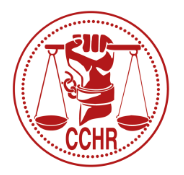 The American Psychiatric Association online newspaper, “Psychiatric News” proudly reported on April 16th, 2015 that “Psychotropics Lead List for Youth-Related Drug Poisoning Calls.”
The American Psychiatric Association online newspaper, “Psychiatric News” proudly reported on April 16th, 2015 that “Psychotropics Lead List for Youth-Related Drug Poisoning Calls.”
And indeed they do top the list.
But the APA probably overlooked the fact they were publicly stating that the “medicines” they so heavily promote to patients are actually poisons – poisons that result in emergency room visits.
The APA writes, “A new report shows that almost half of the calls made to United States poison control centers on behalf of those aged 19 and under are related to medication—with psychotropic drugs representing 50 percent of the top 10 medications contributing to unintentional poisoning.”
These latest statistics were compiled by Safe Kids Worldwide in co-operation with The American Association of Poison Control Centers (AAPCC). The study identified the types of medications that contribute to the volume of calls made to poison control centers for drug poisoning in children and teens.
The study looked at two types of situations.
- Unintentional-general: Unintended exposure resulting from an unforeseen or unplanned event. Examples: child got into a grandparent’s prescription medicine; swallowed medicine left out on a counter.
- Unintentional-therapeutic error: An unintended change in a therapeutic routine that results in the wrong dose, the wrong medicine, or medicine given to the wrong person. Example: Babysitter gave a child a second dose of medicine, when the parent had already given it.
They did not look into cases where the drugs were taken intentionally by the kids.
The study found that atypical antipsychotics and amphetamines intended for the treatment of attention-deficit/hyperactivity disorder (ADHD) were the top two medication classes for serious health outcomes in teens.
What is considered a “serious health outcome”? The glossary in the study states:
- Moderate effect: Patient experienced more pronounced or prolonged effects that resolved and that were not life-threatening. Examples: disorientation, high fever, isolated brief seizures that responded to treatment.
- Major effect: Life-threatening symptoms or symptoms that caused significant permanent health issues. Examples: cardiac arrest or respiratory arrest, coma.
Apparently if you take a medicine which is actually a poison and you die in the ER you have experienced a “significant permanent health issue.”
The Top Ten Drugs Resulting in Moderate or Major Effects by Age Group
Here’s what they found for 2013 based on all the phone calls to the Poison Control Centers that resulted in moderate to major effects on the person taking the drug.
They are shown by age group and by ranking amongst all the drugs that caused these effects
Less than 1 year old
- #1 Amphetamines and Related Compounds
- #2 Clonidine – treats attention deficit hyperactivity disorder (ADHD).
- #4 Atypical Antipsychotics – Risperdal, Zyprexa, Seroquel, Abilify, Haldol, Clozaril
- #7 Benzodiazepines – a class of psychoactive drugs – includes Valium, Xanax, Klonopin, Ativan
- #8 Methylphenidate – treats attention deficit hyperactivity disorder (ADHD) brand names: Daytrana, Concerta, Methylin, Ritalin
1-4 years old
- #1 Clonidine
- #2 Benzodiazepines
- #3 Amphetamines and Related Compounds
- #5 Atypical Antipsychotics
5-9 years old
- #1 Clonidine
- #2 Atypical Antipsychotics
- #4 Methylphenidate
- #5 Amphetamines and Related Compounds
- #6 Other Types of Sedative/Hypnotic/ Anti-Anxiety or Anti- Psychotic Drug
- #8 Benzodiazepines
10-14 years old
- #1 Atypical Antipsychotics
- #2 Clonidine
- #4 Methylphenidate
- #5 Amphetamines and Related Compounds
- #6 Other Types of Sedative/Hypnotic/ Anti-Anxiety or Anti- Psychotic Drug
- #7 Benzodiazepines
15-19 years old
- #1 Atypical Antipsychotics
- #2 Amphetamines and Related Compounds
- #4 Clonidine
- #6 Benzodiazepines
- #10 Methylphenidate
That’s a lot of top ten rankings for the psychotropic drug industry products in creating calls to Poison Control Centers and emergency room visits for kids.
Psychiatric Drugs Also Lead the Way in Intentional Poisoning Suicides
The Center for Disease Control (CDC) reports that 81% of intentional poisoning suicides attempts were caused by drugs – both legal and illegal.
The most commonly used drugs identified in drug-related suicides were psychoactive drugs, such as sedatives and antidepressants, followed by opiates and prescription pain medications
In 2011there were an estimated 228,366 attempted suicides that led to hospital emergency department visits. Almost all involved a prescription drug or over-the-counter medication.
“Benzodiazepines (anti-anxiety drugs) were found to be involved in 29.3% of drug – related suicide attempts. Alprazolam (Xanax) and clonazepam (Klonopin) each accounted for about a third.
Antidepressants appeared in 19.6% of visits. About half of those visits involved an SSRI antidepressant such as citalopram, sertraline, or fluoxetine. Trazodone, a SARI antidepressant, was involved in about a quarter.
Antipsychotics, as a whole, appeared in 12.9% of visits, with the vast majority being the newer types of atypical anti-psychotics e.g. Quetiapine.”
The drugs that appeared most frequently as the cause of death by poisoning in a successful deliberate suicide attempt were by ranking:
In #1 position – Sedative/hypnotics/anti-psychotics which accounted for 14.1% of the deaths and in number #8 position – antidepressants at 4.4%
The National Poison Data System showed 1.34 million calls associated with poisoning of a child or teen were made to poison control centers in 2013 with 547,042 of those calls related to unintentional-general exposures or unintentional-therapeutic errors. As we’ve seen Atypical antipsychotics and amphetamines intended for the treatment of attention-deficit/hyperactivity disorder were the top two medication classes for serious poisoning health outcomes in teens.
The American Association of Poison Control Centers Executive Director Stephen Kaminski, J.D., feels there is a need to educate families on using medicines responsibly – locking up medicine, etc. etc. but the real problem is having American homes filled with poisons labeled as “medicine” and the solution is to not allow such toxic preparations to be sold in the first place.
They can’t be very good medicine if they poison kids who take them accidentally or if kids try to kill themselves by taking them.
SOURCES:
http://www.safekids.org/research-report/medicine-safety-children-depth-look-calls-poison-centers-march-2015http://psychnews.psychiatryonline.org/doi/full/10.1176/appi.pn.2015.4b6
http://lostallhope.com/suicide-statistics/drug-poisoning-us



0 Comments